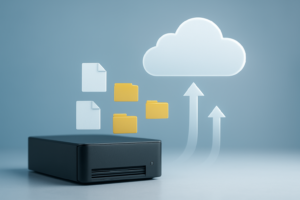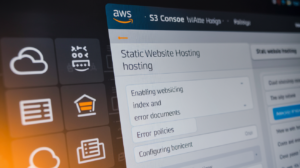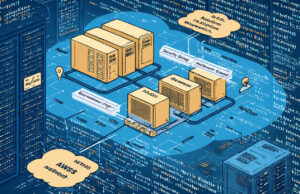Ever spent three hours debugging a Docker container only to realize it was a simple network permission issue? Yep, system design can feel like an endless maze of complicated terms and interconnected parts.
But here’s the truth: mastering Kubernetes, microservices, and cloud architecture doesn’t require a computer science PhD—it just needs the right visual explanations.
This guide breaks down system design concepts with clear diagrams that actually make sense. No more drowning in technical jargon or pretending to understand what “eventual consistency” means during meetings.
Whether you’re preparing for that big tech interview or trying to understand why your microservices keep failing in production, these visual breakdowns will transform how you think about system architecture.
What if I told you the difference between junior and senior engineers isn’t coding skills, but system thinking? Let’s see why.
Foundational System Design Concepts
A. Key Architecture Patterns Every Developer Should Know
Ever noticed how certain building blocks keep popping up in system design? That’s because they work. These patterns aren’t just fancy jargon to impress during interviews – they’re battle-tested solutions to common problems.
Microservices break applications into manageable, independent services. Think of them as specialized teams rather than one overwhelmed department handling everything.
Event-driven architecture lets components communicate through events, creating loosely coupled systems that can evolve independently. When something happens, interested parties get notified without needing to constantly check.
Layered architecture organizes code into distinct layers (presentation, business logic, data) – keeping your codebase clean and maintainable.
API Gateway pattern provides a single entry point for client applications, handling cross-cutting concerns like authentication and rate limiting.
CQRS (Command Query Responsibility Segregation) separates read and write operations, optimizing each for its specific purpose.
B. Scalability vs. Performance: Understanding the Difference
Scalability and performance are cousins, not twins.
Performance is about speed – how fast your system responds under current conditions. Scalability is about maintaining that performance as demands grow.
| Performance | Scalability |
|---|---|
| How fast? | How far? |
| Response time, throughput | Ability to handle increased load |
| Optimization-focused | Growth-focused |
| “My app is lightning fast” | “My app can handle Black Friday traffic” |
A high-performance system might crumble under increased load if it’s not scalable. Meanwhile, a scalable system might start with mediocre performance but maintain it consistently as users multiply.
The trap? Optimizing too early for one at the expense of the other.
C. Trade-offs in System Design: When to Compromise
System design isn’t about finding perfect solutions – it’s about making smart trade-offs.
The CAP theorem tells us we can only have two out of three: Consistency, Availability, and Partition tolerance. In real-world distributed systems, you’ll always sacrifice something.
Consistency vs. availability? Banking needs consistency (accurate balances), while social media prioritizes availability (seeing posts anytime).
Performance vs. cost? Sure, you could provision massive servers, but your CFO might have questions.
Simplicity vs. flexibility? A simpler system is easier to maintain but might be harder to adapt later.
Development speed vs. technical debt? Ship fast today, but potentially pay the price tomorrow.
D. Visualizing Complex Systems with Simple Diagrams
The most brilliant system design means nothing if nobody understands it.
C4 model diagrams provide four levels of abstraction: Context, Containers, Components, and Code. Start with the big picture before diving into details.
Sequence diagrams show the time-ordered flow of operations between components. They’re perfect for capturing complex interactions and API calls.
Data flow diagrams highlight how information moves through your system – critical for spotting bottlenecks and security vulnerabilities.
Infrastructure diagrams map your physical (or cloud) resources, showing how components are deployed.
Remember: a good diagram answers specific questions. It doesn’t need to show everything – just what matters for the current discussion.
Kubernetes Essentials for Modern Applications
A. Kubernetes Core Components Simplified
Kubernetes isn’t just a container orchestrator—it’s like a smart manager for your application containers. Think of it as the conductor of an orchestra where each musician is a container.
At its heart, Kubernetes has a few key players:
- Control Plane: The brain of the operation. It makes all the decisions about where and how to run your containers.
- Nodes: These are your worker machines—the actual servers running your containerized apps.
- Pods: The smallest deployable units in Kubernetes. A pod is a group of one or more containers with shared storage and network resources.
- Services: They’re how your applications communicate with each other. Think of them as the internal phone system for your apps.
- ConfigMaps and Secrets: These store configuration data and sensitive information your apps need.
Here’s what makes it all click:
Master Node Worker Nodes
┌─────────────┐ ┌─────────────┐
│ API Server │ │ Pods │
│ Scheduler │ ───▶ │ Containers │
│ Controllers │ │ kubelet │
└─────────────┘ └─────────────┘
If you’re picturing a complex beast, you’re not alone. But strip away the fancy terminology, and you’ve got a practical system that keeps your containers running exactly where and how you want them.
B. Container Orchestration: From Theory to Practice
Container orchestration sounds fancy, but it’s really about solving everyday problems: “Where do I run this container?” and “What happens when it crashes?”
Kubernetes excels here by automating:
-
Deployment: Say goodbye to manual container setup. Define what you want in a YAML file, and Kubernetes handles the rest.
-
Scaling: Traffic spike? No problem. Kubernetes can automatically add more container instances when demand increases.
-
Self-healing: If a container fails, Kubernetes restarts it. If a node dies, Kubernetes reschedules those containers elsewhere.
-
Load balancing: Kubernetes distributes network traffic to prevent any single container from becoming a bottleneck.
Here’s a real-world scenario: You’ve got a web app with separate front-end and database containers. With Kubernetes, you define their relationship, resource needs, and scaling rules—then Kubernetes maintains that state no matter what happens.
The beauty of Kubernetes is that it turns theoretical concepts into practical solutions. You’re not just deploying containers; you’re creating a resilient system that adapts to changing conditions.
C. Managing Application Lifecycle with Kubernetes
Your app’s journey from development to production is a lot smoother with Kubernetes handling the heavy lifting.
The lifecycle typically flows like this:
- Creation: Package your app in containers and define how they should run using Kubernetes manifests.
- Deployment: Push your configuration to Kubernetes using
kubectl apply. - Scaling: Adjust replicas manually or set up autoscaling based on metrics.
- Updates: Roll out new versions with zero downtime using rolling updates.
- Rollbacks: Made a mistake? Quickly revert to a previous version.
The game-changer here is declarative configuration. Rather than giving step-by-step instructions, you tell Kubernetes what the end state should look like, and it figures out how to get there.
Consider this update scenario:
# Before: 3 replicas of v1
# After: 3 replicas of v2
With Kubernetes:
1. Update the image tag in your deployment.yaml
2. kubectl apply -f deployment.yaml
3. Watch as Kubernetes gradually replaces v1 pods with v2
No downtime. No manual container juggling. Just a smooth transition that keeps your users happy.
D. Scaling Strategies That Actually Work
Scaling isn’t just about throwing more resources at a problem—it’s about being smart with what you’ve got.
Kubernetes offers three powerful scaling approaches:
-
Horizontal Pod Autoscaling (HPA): Automatically adds or removes pod replicas based on CPU/memory usage or custom metrics. Perfect for handling variable loads.
-
Vertical Pod Autoscaling (VPA): Adjusts CPU and memory requests/limits for your pods. Great for applications with changing resource needs.
-
Cluster Autoscaling: Adds or removes nodes from your cluster. Ideal for optimizing infrastructure costs.
Here’s what makes these strategies actually work in production:
- Metrics-based decisions: Scale based on real usage data, not guesswork.
- Gradual scaling: Avoid the “thundering herd” problem by scaling gradually.
- Resource quotas: Prevent any single service from consuming all cluster resources.
Let’s be honest—manual scaling doesn’t cut it anymore. A real-world e-commerce site might need 5 replicas during normal hours but 20 during flash sales. Setting up HPA with the right metrics means your app scales up before users notice any slowdown, then scales down to save costs when the rush is over.
E. Troubleshooting Common Kubernetes Issues with Visual Guides
Kubernetes problems can feel like finding a needle in a digital haystack. Let’s cut through the complexity with some visual troubleshooting approaches.
When pods won’t start, follow this decision tree:
Pod stuck in Pending? ──▶ Check node resources with kubectl describe node
│
▼
Image won't pull? ────────▶ Verify image name and registry credentials
│
▼
CrashLoopBackOff? ───────▶ Check logs: kubectl logs pod-name
For networking issues, visualize the connection path:
Service ───▶ Endpoints ───▶ Pods ───▶ Containers
If a service isn’t reachable, check each component in this chain using:
kubectl get endpoints my-servicekubectl describe service my-service
Memory issues often appear as evicted pods. The visual pattern to watch for in kubectl get pods output:
NAME STATUS REASON AGE
web-frontend-1 Evicted Memory 2m
web-frontend-2 Running 10m
This pattern suggests your resource limits need adjustment.
The secret to Kubernetes troubleshooting isn’t memorizing commands—it’s understanding the visual patterns that indicate specific problems. Once you recognize these patterns, solutions become obvious.
Microservices Architecture Demystified
Breaking Down Monoliths: A Step-by-Step Approach
Monoliths aren’t villains – they’re just applications that have outgrown their clothes. Here’s how to break yours down without causing chaos:
- Start small – Pick one relatively isolated function to extract first
- Draw boundaries – Map data dependencies before cutting anything
- Create APIs – Build interfaces between your soon-to-be-separated services
- Extract and test – Move one component at a time, testing thoroughly
- Rinse and repeat – Tackle progressively more complex components
The strangler pattern works wonders here. Instead of a risky big-bang rewrite, gradually replace functionality while keeping the system running. It’s like changing a car’s engine while driving down the highway.
Communication Patterns Between Microservices
Microservices need to talk, but how they chat matters:
Synchronous Communication
REST and gRPC shine when you need immediate responses. They’re like phone calls – direct and real-time.
Asynchronous Communication
Message queues (Kafka, RabbitMQ) let services communicate without waiting. Think text messages instead of calls.
API Gateway Pattern
This single entry point handles cross-cutting concerns like:
- Authentication
- Request routing
- Protocol translation
- Response caching
Event-Driven Architecture
Services publish events when something happens, and interested services react accordingly. This dramatically reduces coupling.
Data Management Strategies Across Services
Each microservice should own its data, period. But this creates challenges:
Database-per-Service
Every service gets its own database, customized for its specific needs:
- NoSQL for unstructured data
- Relational for transaction-heavy services
- Time-series for metrics
Data Consistency Approaches
- Saga Pattern – Chain compensating transactions to maintain consistency
- Event Sourcing – Store changes as events rather than current state
- CQRS – Split read and write operations for better performance
Data Duplication vs. Sharing
Some duplication beats tight coupling every time. Embrace controlled redundancy when needed.
Ensuring Resilience in Distributed Systems
Distributed systems break in creative ways. Prepare for it:
Circuit Breakers
They prevent cascading failures by failing fast when a service misbehaves. The Netflix Hystrix library does this beautifully.
Retry Policies
Smart retries with exponential backoff give struggling services time to recover.
Health Checks
Actively monitor service health instead of waiting for failures.
Bulkhead Pattern
Isolate critical components so failures in one area don’t sink your entire system.
Chaos Engineering
Break things deliberately to build immunity. Netflix’s Chaos Monkey randomly terminates services in production to ensure systems can handle unexpected failures.
Cloud Architecture Fundamentals
A. Multi-Cloud vs. Single Cloud: Making the Right Choice
Cloud architecture isn’t just about moving to the cloud – it’s about choosing the right cloud strategy.
Single cloud keeps things simple. One provider, one set of tools, one bill. AWS, Azure, or Google Cloud – pick your favorite and go all-in. You’ll get deeper integrations, volume discounts, and your team only needs to master one ecosystem.
But what happens when AWS has another major outage? That’s where multi-cloud comes in.
Multi-cloud spreads your bets across providers. It’s like not putting all your eggs in one basket. You gain leverage in negotiations and can pick best-of-breed services from each provider.
Here’s the reality though:
| Single Cloud | Multi-Cloud |
|---|---|
| Lower operational complexity | Better disaster recovery options |
| Simpler cost management | Avoiding vendor lock-in |
| Deeper expertise in one platform | Access to unique services across providers |
| Volume discounts | More negotiating power |
The catch? Multi-cloud means juggling different interfaces, security models, and networking concepts. Your team needs broader skills and your tooling gets more complex.
Most companies start with a primary provider (80% of workloads) and a secondary one (20%) for specific use cases or backup. This hybrid approach gives you most benefits without overwhelming complexity.
B. Infrastructure as Code: Building Repeatable Environments
Gone are the days of clicking through cloud consoles to set up infrastructure. That approach is slow, error-prone, and impossible to scale.
Infrastructure as Code (IaC) changes the game completely. Your infrastructure becomes a set of files in a repository – just like your application code.
Need a new testing environment? Run a script. Need to update all your security groups? Change a file and apply it. Want to know exactly what’s deployed? Check the repo.
The real power kicks in when you combine IaC with CI/CD pipelines. Every pull request can spin up its own isolated environment for testing. Every merge to main can automatically update staging.
Popular tools in this space:
- Terraform: Cloud-agnostic, declarative, massive community
- AWS CloudFormation: AWS-native, deep integration
- Pulumi: Code-first approach using Python, TypeScript, etc.
- Ansible: Configuration management with easy learning curve
Start small – perhaps with a single microservice and its dependencies. Document your existing infrastructure, then recreate it with code. Then expand to more complex systems as you build confidence.
C. Cloud-Native Design Principles
Cloud-native isn’t just a buzzword – it’s a fundamental shift in how we design systems.
Traditional applications were built for stability and long-running servers. Cloud-native flips this model on its head with these key principles:
-
Embrace disposability – Design systems that expect instances to die and restart constantly.
-
Design for horizontal scaling – Adding more of the same is better than bigger versions.
-
Decouple everything – Microservices that communicate through well-defined APIs, not shared databases.
-
Automate relentlessly – If a human has to do it manually, it’s a bug waiting to happen.
-
Treat infrastructure as cattle, not pets – No special snowflake servers that need handholding.
Netflix pioneered many of these ideas with their Chaos Monkey – deliberately killing random services to ensure the system could self-heal.
The payoff? Systems that scale automatically with demand, recover from failures without human intervention, and enable teams to move fast without breaking things.
D. Cost Optimization Techniques
Cloud bills can spiral out of control faster than you’d imagine. One forgotten test environment with a cluster of high-memory instances can blow your monthly budget.
Smart optimization starts with visibility. You can’t manage what you can’t measure. Tools like AWS Cost Explorer, Azure Cost Management, and third-party options like CloudHealth give you the insights you need.
Quick wins that often yield big savings:
-
Right-sizing – Most instances are overprovisioned. Analyze actual usage and downsize accordingly.
-
Spot/preemptible instances – Up to 90% discounts if you can handle occasional interruptions.
-
Reserved instances/savings plans – Commit for 1-3 years for 40-60% discounts on predictable workloads.
-
Auto-scaling – Scale down during low-traffic periods, especially dev/test environments.
-
Storage tiering – Move infrequently accessed data to cheaper storage classes.
One company I worked with saved 40% on their cloud bill just by implementing proper tagging and turning off non-production environments on nights and weekends.
Remember that engineer time is expensive too. Don’t spend 10 hours of developer time to save $5 on your cloud bill.
Real-World System Design Case Studies
A. Designing a High-Traffic E-commerce Platform
Ever shopped online during Black Friday? Then you’ve experienced the challenge of high-traffic e-commerce firsthand. These platforms need to handle thousands of concurrent users while maintaining lightning-fast performance.
The architecture typically includes:
- A load balancer distributing traffic across multiple application servers
- Service-based decomposition (product catalog, cart, payment, user profiles)
- Database sharding to split product data across multiple servers
- Redis or similar for session management and caching
- Message queues for decoupling order processing from the main flow
The real magic happens with dynamic scaling. When traffic spikes, Kubernetes can automatically spin up additional pods to handle the load, then scale down when the rush subsides.
B. Building Scalable Content Delivery Networks
CDNs are the unsung heroes of the internet. Without them, loading images, videos, and JavaScript would be painfully slow.
A well-designed CDN architecture includes:
- Edge servers strategically placed worldwide
- Origin shielding to protect your main servers
- Request collapsing to prevent duplicate processing
- Automatic content optimization (image compression, minification)
- Cache invalidation strategies
Modern CDNs aren’t just about caching anymore. They’ve evolved into compute platforms where you can run serverless functions at the edge, bringing processing closer to users.
C. Architecting Real-Time Analytics Systems
Real-time analytics is where the rubber meets the road in big data. The challenge? Processing massive data streams while delivering insights in milliseconds.
A robust architecture typically features:
- Stream processing with Kafka or Kinesis
- Windowed computations using Flink or Spark Streaming
- Time-series databases like InfluxDB or Prometheus
- In-memory data grids for rapid access
- Materialized views for common query patterns
The key innovation here is the lambda architecture pattern, which combines batch processing for accuracy with stream processing for speed.
D. Fault-Tolerant Payment Processing Systems
Payment systems have zero room for error. Money can’t just disappear because a server crashed.
A fault-tolerant payment architecture includes:
- Distributed transaction patterns (saga pattern)
- Idempotent operations to prevent duplicate payments
- Circuit breakers to gracefully handle third-party service failures
- Dead letter queues for failed transactions
- Comprehensive audit logging
Many payment systems implement the outbox pattern, where transactions are first written to a local “outbox” table before being processed asynchronously, ensuring consistency even during failures.
E. IoT Platforms That Scale to Millions of Devices
IoT platforms face unique challenges: managing millions of devices with intermittent connectivity and varying capabilities.
A scalable IoT architecture typically includes:
- MQTT brokers for lightweight messaging
- Device shadows/twins to track state
- Rules engines for event processing
- Time-series storage for sensor data
- Over-the-air update mechanisms
The device registry pattern is crucial here, maintaining a central database of all connected devices and their metadata, enabling efficient management at scale.
Advanced Visualization Techniques
A. Architecture Diagrams That Actually Communicate
Ever stared at an architecture diagram that looked like someone dropped spaghetti on the page? Yeah, me too.
Good architecture diagrams aren’t about showing off every technical detail—they’re about making complex systems understandable. Start with a clear purpose: What story are you telling? Who’s your audience?
The best diagrams follow these principles:
- Consistent symbols – Don’t make people guess what each shape means
- Logical grouping – Related components should live near each other
- Progressive disclosure – Show high-level first, then let viewers drill down
- Color with purpose – Use color to highlight, not decorate
Try the C4 model approach: Context → Containers → Components → Code. It lets you zoom from bird’s-eye view to ground level without overwhelming anyone.
B. Sequence Diagrams for Complex Workflows
Sequence diagrams are your secret weapon for explaining “what happens when.”
They shine when mapping out API interactions, authentication flows, or multi-service processes. The beauty is in their simplicity—just actors and the messages between them, arranged in time order.
For maximum clarity:
- Keep them focused on one scenario
- Label messages with actual API calls or events
- Include timing constraints for performance-critical paths
- Show error paths (not just the happy path)
Tools like PlantUML or Mermaid let you generate these from code, keeping them updated as your system evolves.
C. Data Flow Visualization Best Practices
Data flow diagrams reveal how information moves through your system—the lifeblood of any architecture.
The most effective data flow visualizations:
- Distinguish between control flow and data flow
- Show data transformations at each step
- Highlight where data is persisted vs. in-flight
- Mark security boundaries where data changes protection contexts
Don’t just show the “what”—show the “how much.” Annotate flows with volume metrics (requests/second, payload sizes) to give viewers a sense of scale.
D. Performance Bottleneck Identification Through Visual Analysis
Finding performance issues without visualization is like finding a needle in a haystack while blindfolded.
Heat maps, flame graphs, and traffic flow diagrams transform raw metrics into actionable insights. When building these visualizations:
- Use color intensity to show load or latency hotspots
- Incorporate time dimensions to reveal patterns
- Size components proportionally to their resource consumption
- Highlight cross-cutting concerns like database connections
The most powerful approach combines multiple visualization types—like overlaying latency heat maps on your architecture diagram. This immediately shows which components are struggling under load and how that affects dependent services.
When a product manager asks “why is it slow?” these visualizations let you answer with confidence instead of guesswork.
Mastering system design fundamentals is essential in today’s technology landscape. From understanding core concepts to implementing Kubernetes for orchestration, developing microservices architectures, and leveraging cloud infrastructure, you now have the visual framework needed to tackle complex system challenges. The real-world case studies provide practical applications of these concepts, while visualization techniques help communicate architectural decisions effectively.
Take the next step in your system design journey by applying these visual approaches to your own projects. Start small by diagramming an existing system, then gradually incorporate Kubernetes and microservices patterns into your architecture. Remember that effective system design is an iterative process that balances technical requirements with business needs. As you continue to learn and experiment, you’ll develop the confidence to design scalable, resilient systems that stand up to real-world demands.




















